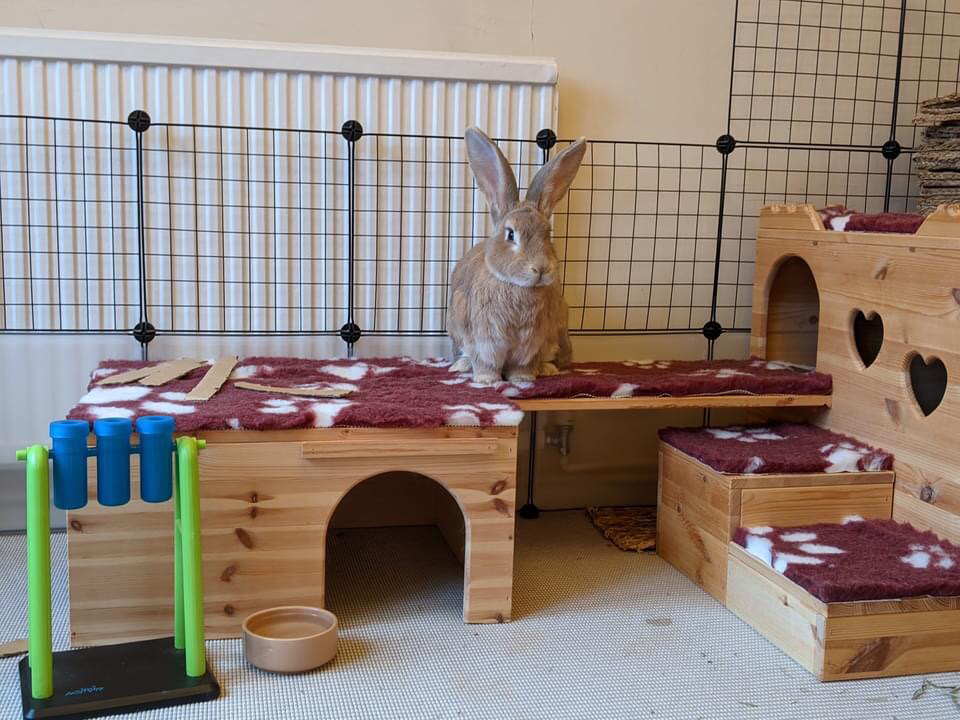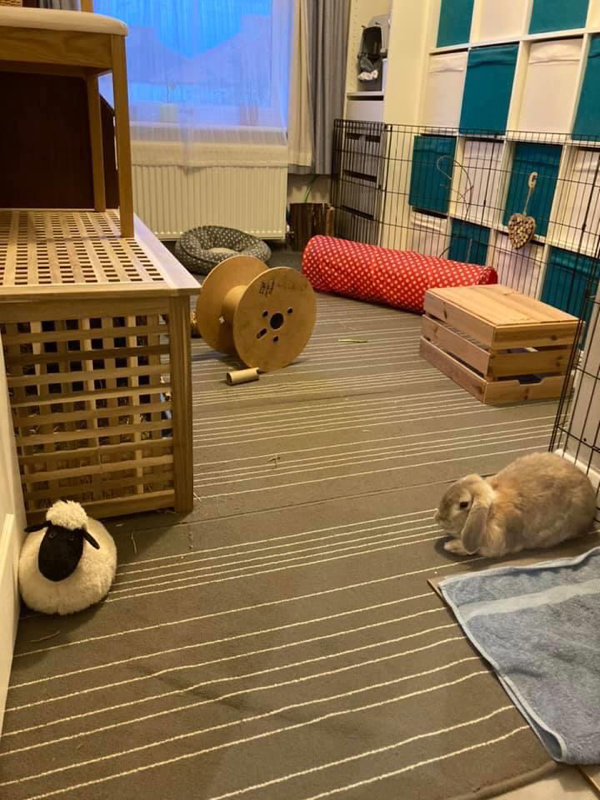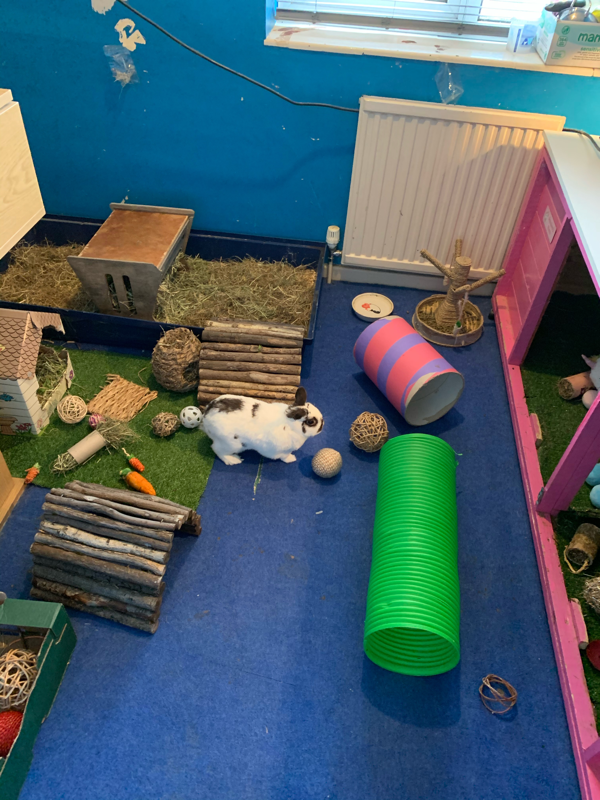Please allow up to 7 working days for our rehoming team to get back to you.
Rehoming fees: All costs below are a minimum requested donation. This is to help cover our costs.
All rabbits are neutered, up to date with all vaccinations and treated for E.cuniculi.
Rabbits - £70.00

Outdoor rabbits – A HUTCH IS NOT ENOUGH!
We base our rehoming requirements off the RWAF guidelines.
Please click here to read more, or read below for the measurements we follow.
Our recommended living area for 2 average sized rabbits (and they should be kept at least in pairs) is a single enclosed area of at least 3m x 2m by 1m high. This can include the sleeping quarters, and makes up a footprint (accessible area of the ground or floor) of 3m x 2m.
It’s important for the rabbits that this 3m x 2m footprint is in a single block of space because it allows them to display positive behaviours, for example, to run rather than just hop.
The upper floor of a two-storey hutch does NOT count towards the footprint. Similarly, whilst raised platforms, tunnels and other connected areas are great for enrichment and are actively encouraged, they do not count towards the footprint.
Please note that the 3m length is important as this allows the rabbits to run and not just take a few hops. We sometimes see 60sq ft of space being referred to as the minimum guideline, but this does not always meet the minimum guidelines, for example 8ft x 8ft would be 64ft, but there is not a 3m length in that set up.
The sleeping quarters (hutch for example) should be a minimum of 1.8m x 0.6m x 0.6m high (or 6ft x 2ft x 2ft).
A HUTCH SHOULD NEVER BE THE SOLE OR MAIN ACCOMMODATION FOR RABBITS.
Here are some example set ups:
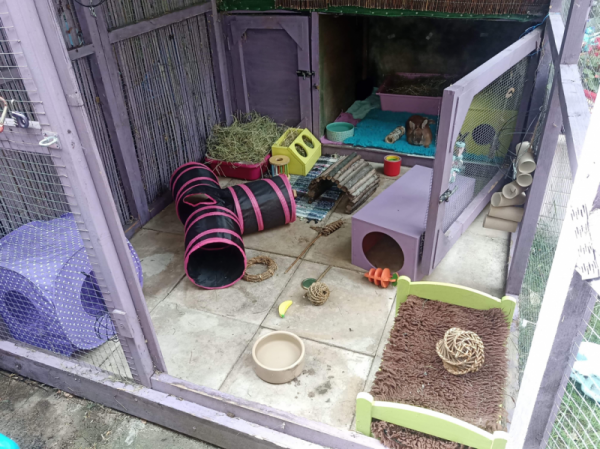
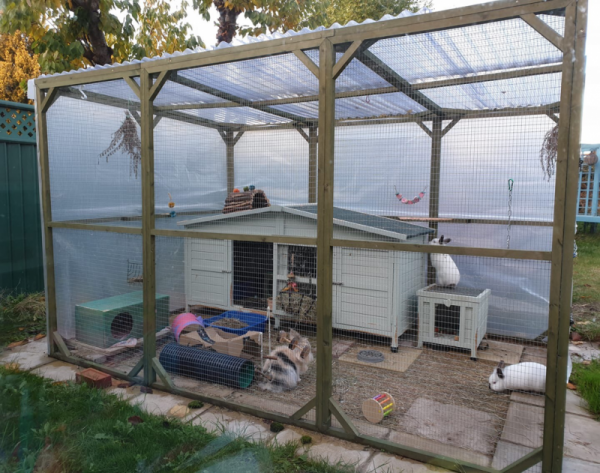
Indoor rabbits
Rabbits could be kept in their own room/part of a room and be allowed to free roam safe areas.
Even if indoors the will still require as much space as outdoor rabbits. We do not accept indoor cages as housing as these are much too small (but are great as litter boxes!)
They will need to be able to show their natural behaviours of running, digging, jumping, hiding and grazing.
Safety – electric wires need to be put in protective trunking and hidden away.
Chewing – wires are not the only thing rabbits will chew. Wallpaper, furniture, door frames, carpets, clothes and shoes are a few examples. You need to provide lots of suitable chew toys to keep them out of mischief!
Great escape – rabbits can squeeze through surprisingly small gaps and can jump very high. Ensure you have blocked off any hidey holes that they could get stuck in.
Litter training – it is fairly easy to litter train your rabbits and this is something you will need to do, however you need to allow time to do this and have the rabbits in an area where you don’t mind accidents happening while they are learning
Outdoor space must be available even for indoor rabbits. This needs to either be a fully secure run 8ft by 6ft and at least 2ft high or a fully secure garden with no poisonous plants. Free access always needs to be supervised.
Here are some example set ups:
